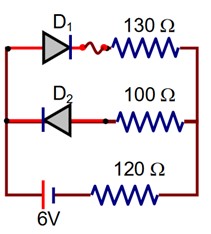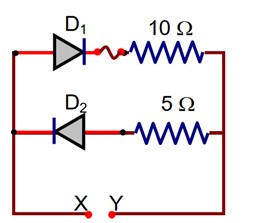Semiconductor Electronics: Materials, Devices and
Get insights from 121 questions on Semiconductor Electronics: Materials, Devices and, answered by students, alumni, and experts. You may also ask and answer any question you like about Semiconductor Electronics: Materials, Devices and
Follow Ask QuestionQuestions
Discussions
Active Users
Followers
New answer posted
3 months agoContributor-Level 10
A tristor is formed by doping a semi conductor water from one side by N-type dopant (high concentration while comparatively lower concentration on other side thus forming NPN tristor & vice-versa.
So, statement (I) is false & statement (II) is true.
New answer posted
3 months agoContributor-Level 10
Zener break down occurs in p-n junction having p and n both : Heavily doped and have narrow depletion layer.
New question posted
3 months agoTaking an Exam? Selecting a College?
Get authentic answers from experts, students and alumni that you won't find anywhere else
Sign Up on ShikshaOn Shiksha, get access to
- 65k Colleges
- 1.2k Exams
- 679k Reviews
- 1800k Answers






